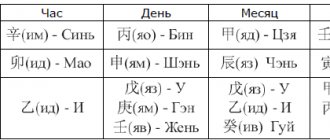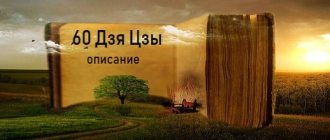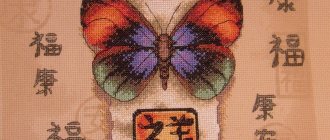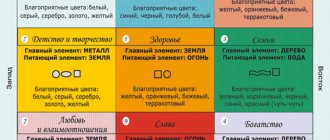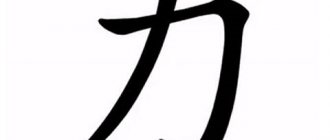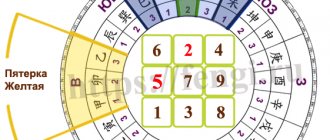"Bazi" redirects here. For the German World War II ace, see Robert Weiss (pilot). For the Bengali film, see Bazi (2005 film).
| Date: Birth Chart | |
| Chinese | 生辰八字 |
| Hanyu Pinyin | shēngchen bāzì |
| Canton Yale | sāangsàhn baatjih |
| Literal meaning | Birth time of eight characters |
| Wade – Giles | sheng1 ch'en2 pa1 tzu4 |
| Yue: Cantonese | |
| Yale Romanization | sāangsàhn baatjih |
| Jyutping | saang1san4 baat3zi6 |
| Term: four pillars | |
| Chinese name | |
| Traditional Chinese | 四柱命理學 |
| Simplified Chinese | 四柱命理学 |
| Hanyu Pinyin | sì zhù mìnglǐ xué |
| Canton Yale | sei chyúh mehngléih hohk |
| Literal meaning | Research "The Four Pillars of Life" |
| Yue: Cantonese | |
| Yale Romanization | sei chyúh mehngléih hohk |
| Jyutping | sei3 cyu5 meng6 lei5 hok6 |
| Yue: Cantonese | |
| Yale Romanization | jípìhng mehngléih |
| Jyutping | zi2 ping4 meng6 lei5 |
, also known as "
Ba-Zi
", which means "eight characters" or "eight words" in Chinese, is a Chinese astrological concept that a person's destiny or destiny can be predicted by two sixty-year cycle characters assigned to their year of birth, month , day and hour. This type of astrology is also used in Japan and Korea.
Development
The Four Pillars of Destiny can be attributed to the Han Dynasty, but this was not systematic as known today. During the Tang Dynasty, Lǐ Xūzhōng (Chinese: 李虛中) reorganized this concept and used each of the two sexagenary cycle symbols assigned to a person's year, month, and date of birth to predict his personality and future. It was called the "Three Pillars of Destiny" and the theory became increasingly popular after this.[1]
During the Song Dynasty, Xu Zi Ping
(Chinese: 徐子平), which reformed
Liu Xu-Chong's
"Three Pillars of Fate" by adding "time of birth" as the fourth pillar, which means adding two more characters of the sixty-year cycle to the pillars of a person's destiny, from six signs to eight signs, which made the forecast accuracy much higher and more useful.
Therefore, people regarded Xu Zi Ping
as a layer of the solid foundation of the Four Pillars of Destiny.[1]
Ba Zi Map and the 4 Pillars of Destiny - what is it?
What is the Ba Zi Card:
Ba Zi or Ba Zi is an ancient Chinese method of analyzing a person’s fate that has come down to us.
The first mention of Ba Zi appeared about 5000 years ago, during the reign of the royal dynasty of Wu. Ba Zi translated from Chinese means “8 Characters” (“8 Characters”). In Western terminology, as in ours (since Feng Shui came to us through Western enthusiasts), it is customary to designate this method by the term “Four Pillars”. Each of the 4 Pillars contains two characters from Chinese metaphysics, thus giving us the “8 Characters”. To analyze a person’s fate, we need to form his Ba Zi card, which will also include the 10-year cycles of his Pillars of Fate (Pillars of Luck). Various combinations of all these components will give us the keys to understanding the past and future of a given individuality.
What do we need for the calculation?
Only the person's date of birth. For accurate calculations, you will need not only the birthday, but also the hour and minutes. If at that second you were overcome by a wave of amazement, then it is completely justified. When I myself began my acquaintance with Ba Zi, what struck me most of all was the fact that already at the moment of a person’s birth, all the main milestones of fate were already placed on his life path. And the most difficult and important part of working with the Ba Zi card is its competent and accurate decoding.
Map of Ba Zi and the Laws of Nature
As we have already said, the classical Ba Zi was founded about 5,000 years ago. As far as we know now, in those days people did not have developed technologies - the planet was at the mercy of Nature. Life revolved around natural elements. What is meant by nature in this case? These are all seasonal changes, the use of natural resources for the benefit of man and the interaction with each other of the 5 Elements - Wood, Fire, Earth, Metal and Water, which form the fundamental basis of everything - from the structure of the Universe to the processes on which the life and fate of a person directly depends.
For example, we know that the Sun (Fire) can warm the ocean (Water) and provide food for plants (Wood). Water is essential for the growth of flora and the survival of fauna, just like the sun. Without Fire, icy Water is unable to grow anything. If the Water is too aggressive, it can wash away plants (Wood) and break trees. Metal can cut down trees, from which, in the future, you can build a home and feed the Fire, receiving warmth. The Earth is able to stop the flood (controls Water). Ash from burnt trees fertilizes the soil. Fertile Land is necessary for the germination of crops and further harvests. Rain (Water) is necessary to moisten the soil. Metal and, especially, gold, which are mined from the Earth (accordingly, it “generates” them), can be exchanged for food, etc. The description of all these processes shows the interrelation and interdependence of the 5 elements, based on the principle of I-Jing (“Book of Changes”), on the interaction of the energies of Yin and Yang.
Graphically this interaction is represented by the U-Sin Circle:
Ba Zi Map - What's Inside
The Ba Zi card is the unification of “Heaven, Earth and Man”. Simply put, this means that at the moment of birth (or at some point in the assemblage), each of us was identified and assigned a set of 8 Characteristics - 4 Heavenly Stems and 4 Earthly Branches, distributed according to the year, month, day and hour of our birth. The Ba Zi calculator represents this set as follows (the top row of hieroglyphs and their descriptions above are Heavenly Trunks, the bottom row of hieroglyphs with their descriptions below are Earthly Branches):
The common name for the columns is 4 Pillars. Each Pillar consists of two parts - the upper one, called the Heavenly Stem (NS) and the lower one, called the Earthly Branch (EB). But it doesn’t end there - to complete the analysis of a person’s fate, the so-called Hidden Heavenly Stems (HTS) are used. They are contained within the Earthly Branches. Each Branch, like a box, contains SNAs (from one to three). In the example below we see a CNN. In the Earthly Branch there is one year, in the GE there is also one month, and in the GE there are three hours and days:
Heavenly Trunks are named after one of the 5 Elements. But not just any Elements. Each of them will be either Yang (plus, masculine) or Yin (minus, feminine). I will immediately ask forgiveness from ardent supporters of feminism for the ancient Chinese - in Feng Shui there are generally many characteristics that may not be to your liking. But do not rush to conclusions and do not abandon the subject of study, because metaphysics is simply symbolic. In it, a man can have Yin traits, and a woman can have Yang traits. So there is enough pleasure for everyone, the main thing is to thoroughly master this art.
Total:
possible number of all combinations is 5*2=10 pieces. We have 10 types of NS (the same applies to SNS).
The earthly branches also belong to one of the 10 elements, but in total there are not 10, but 12 branches. Each of the 12 has its own astral “animal” attached. Let us list them for general information: Rat, Ox, Tiger, Rabbit, Dragon, Snake, Horse, Sheep (in some sources this animal is called Goat), Monkey, Rooster, Dog and, finally, Pig. There are 12 Earthly Branches in total, 10 elements - the missing two elements are filled with additional Yang Earth and Yin Earth.
The concept of Yin and Yang – the birth of “Change”
The concepts of Yin and Yang first appeared in ancient Chinese sources more than 7,000 years ago, when people primarily needed to survive and harness the indomitable forces of nature. Yin and Yang are two opposites, but they complement each other, creating a “whole”.
Yang represents day, light and warmth. Yin carries night, darkness and cold. When Yin grows and strengthens, Yang fades and weakens and vice versa. Moreover, in every Yin there is a Yang and in every Yang there is a Yin. When we talk about life balance, we talk about Yin and Yang.
Yang energy represents masculinity and strength, while the meaning of Yin is feminine and meek. The marriage union of Yin and Yang gives rise to a family union and the birth of children.
Yin and Yang are necessary to maintain balance and integrity.
Although they are opposites, Yin and Yang are interdependent and complement each other. Cold weather (autumn and winter) will be followed by warm weather (spring and summer), and the cycle continues.
Yin represents Earth and Yang represents Heaven (Time). The Earth is stable, inert, and its rotation is influenced by the Yang that is already present in the Earth. In science this is called gravity or the influence of a magnetic field. In Chinese metaphysics - Heaven, Earth and Man.
When reading the Ba Zi card, Heaven represents our social status and events. The earth represents our feelings. Man represents our hidden secrets. These three domains interact with each other and influence the overall outcome. And it can be both peaceful and catastrophic. However, if we can truly understand our Ba Zi Card, we will become masters of our home.
Everything begins in this Trinity (Heaven, Earth and Man). They interact to create the initial conditions and the final result. And the Ba Zi card is a certain composition of “Heaven, Earth and Man”.
INGREDIENTS OF HEAVEN, EARTH AND MAN
Our destiny, as well as all our results and events, is influenced by the interactions of Heaven, Earth and Man. In other words, your Ba Zi chart tells about your performance in society and behavior that is obvious to others (Heaven), your feelings and who you are deep inside (Earth), and your hidden potentials or problems (Human).
This trinity plays an important role in determining:
1) Who we are: our talents, roles, strengths and weaknesses.
2) How we treat others: our relationships with our spouse, family, boss, colleagues, etc.
3) What opportunities are given to us: how well we lived when we were children, the atmosphere in the family, brothers and sisters, friends, cycles of luck, etc.
4) Events and results in our lives: marriages, careers, health, etc.
5) How our children will treat us: the degree of closeness with our children, will it be difficult to raise them, will they occupy a high position in society.
So, we all have individual combinations of “Heaven, Earth and Man” determined at the time of our birth. Does this mean that our lives are completely predetermined? Yes and no. Most people really live “as it is written.” But, according to statistics, not the majority are satisfied with their lives.
What does Feng Shui and the Ba Tzu card answer to the question of predestination? A beautiful Chinese proverb: “At the end of the day, by living what you were given at birth, you can still improve your life if you know yourself well.” Understanding his nature, knowing his strengths and weaknesses, a person can build his own strategies and remake his future. It’s not for nothing that we chose a pirate treasure map as the image preceding the article. Yes, if desired, your Ba Zi card can lead you to treasures. It will help to open hidden “Vaults”, curb unhelpful demons and activate “Noble People”. Only you can decide, only you determine for yourself who you are - a corsair, a treasure hunter of your life, or a person simply living your life, opportunities, money, success and so on and so forth...
So don’t hesitate, change your destiny for the better, decipher your Ba Zi card:
Tags Materials on Ba Zi
Method
Days, hours, months and years refer to one of the ten Heavenly stems and one of the twelve Earthly branches in a sixty-year cycle. A person's fortune is determined by looking for the branch and trunk symbols for each of these four parts of his birth time.
Year
Main article: Sexagenarians
Months
Main article: Sexagenarian months
Days
Main article: Sixty-year days
Watch
Main article: Sixty-year clock
How to determine family relationships and other aspects of life
Houses - according to the position of the elements in the four pillars
| Hour | Day | Month | Year |
| Son | Personality | Father | Grandfather |
| Daughter | Spouse) | Mother | Grandmother |
Stars: in relation to the personality element
For men:
- Mother is the element that gives birth to personality
- Father is an element destroyed by personality
- Descendants are an element that destroys personality
- The wife is an element destroyed by the personality (the same as for the father)
- Siblings - Same element as personality
For women:
- Mother is the element that gives birth to personality
- Father is an element destroyed by personality
- The husband is an element that destroys personality
- Descendants are an element generated by a person
- Siblings - Same element as personality
Schools
| This section contains information of an unclear or dubious nature, importance or relevance to the topic of the article . |
The schools are the Academic School (學院派, Xue Yuan Pai
) and Vocational School (江湖派,
Jiang Hu Pai
).
In Academic School
began with
Xu Zi Ping
(徐子平) at the beginning of the Song Dynasty.
Xu established a purely theoretical basis for the system. Representatives of this school and their publications include: Song Dynasty (宋)
- San Ming Yuan Yuan 三命渊源, Xiu Da Sheng 徐大升
- Yuān Hǎi Zi Píng 淵海子平, composed by Xiu Da Sheng 徐大升 (in the style of Zi Píng 子平)
Ming Dynasty (明)
- Di Tian Su 天髓
- San Ming Tong Kuai 三命通會, Wang Ming Yin 万民英
- Míng Wàn Yù Wú育萬育吾
- Ming Liu Ji 明劉基
Qing Dynasty (清)
- Mìng Lǐ Yuē Yán 命理約言 by Chén Sù Ān 陈素庵
- Ming Lu Tang Yuan 命理探源, Yuan Shuo Shan 袁树珊
In Japan
| This section may be unclear or very difficult to understand . |
Definitions
Sho-Kan
also a relative pronoun among
Heavenly Stems
.
When we have a birthday like甲子
,
甲戌
,
甲申
,
甲午
,
甲辰
,
甲寅
, in the Chinese calendar, then
Tei
,
Hi no
(丁) will belong to Sho-Kan.
When we have Heavenly Stems like甲
on our birthday
丁
acts as a Sho-Kan factor as follows:
- 乙: 丙
- 丙: 己
- English: 戊
- 戊: 辛
- 己: 庚
- 庚: 癸
- 辛: 壬
- 壬: 乙
- 癸: 甲
Meaning
- Generally speaking, Sho-Kan means superb talent, brilliant performance, academic potential.
- Freedom of speech, freedom of thought and freedom of expression are said to be associated with Sho-Kan.
- When we do not have proper Sho-kan in our daily lives, we may become confused and may even be involved in antisocial activities.
- Sho-Kan is also a sword and slash symbol.
- Figures with Sho-Kan are usually bright and beautiful; however, true and real success in life is another aspect.
Example
- Hirohito (also known as Emperor Showa), born April 29, 1901, died January 7, 1989. His birthday is April 29, 1901, a day called Showa Day in Japan.
The graph looks like this:
- Year of birth: 1901: 辛丑
- Birth month: April: 壬辰
- Birthday: 29: 丁丑
- Time of birth: quarter to ten at night (22.15): 辛亥
The basic structure of his diagram is:傷官
(Sho-Kan),
格
.
The day (in the Chinese calendar) meets April, the month of Make Yo
(土用), the month
of 戊
, so we get Sho-Kan.
The most important element and worker of his diagram is甲
or
乙
.
Inju also has a worker who controls Sho-Kan. In 1945, the year乙酉
, Inju has no effect.
Heavenly Stalk乙
in
Ku Bo
(空亡, work suspended).
Also, Dai Un
(Long Term History of Japan) is as follows.
The beginning of April in the Lunar calendar is the fifth day, which means there are 24 days from the 5th day to Hirohito’s birthday. One month is equivalent to ten years in Dai Un
, and 24 days are equivalent to eight years. The events on the historical time scale corresponding to his life from eight to 18 years are as follows.
From 8 to 18 years old: 辛卯
- 18 to 28: 庚寅: corresponds to the reign and beginning of the Showa Period in 1926
- 28 to 38: 己丑: Second Sino-Japanese War begins in 1937.
- 38–48: 戊子: World War II, 1939–1945
- 48–58: 丁亥
- From 58 to 68: 丙戌
- From 68 to 78: 乙酉
- 78 to 88: 甲申: end of the Showa Period in 1989
- From 88 to 98: 癸未
Proponents of the Sho-Kan system believe that Hirohito's map somehow explains Japan's defeat in World War II after the catastrophic atomic bomb explosions on Hiroshima and Nagasaki.[ citation needed]
]
Frequency of the four pillars
The problem of the periodicity of the four pillars is a problem of calendar arithmetic, but most fortune tellers cannot handle mathematics correctly. Hee[2], for example, suggested that it takes 240 years for a given four-legged quad to repeat itself. In paragraph 22, He wrote,
. . . due to the many possible combinations, it takes 60 years for the same set of year columns to repeat (by comparison, a set of month columns repeats after only five years). Therefore, if you have a specific day and time, the set of four pillars will repeat itself after 60 years. However, since the same day may not appear in exactly the same month - and even if it is in the same month, the day may not be found in the same half of the month - it takes 240 years before the identical four pillars appear again . . .
Hee's proposal is incorrect and can be easily refuted with a counterexample. For example, the four-pillar quads for 1984-3-18 and 2044-3-3 are exactly the same (i.e. 甲子 - 丁卯 - 辛亥 -xx), and they are only 60 years apart. But the next isoquadruplet will appear again only after 360 years (at 2404-4-5). In addition, a periodicity of 1800 years is required to accommodate both the sexagenarian and Gregorian cycles. For example, 4-3-18, 1980-3-18 and 3964-3-18 use the same four-column four-column element.
The solution to the isogregorian quadruple is the Diophantine problem. Suppose that the gap, gram {displaystyle g}, between two successive four-bar quadruplets is irregular and is given by gram = 60 ( 365 λ 1 + λ 2 ) { displaystyle g = 60 (365lambda _ {1} + lambda _ {2})} and suppose that f {displaystyle f} and f + g ′ {displaystyle f + g '} are two consecutive rata die numbers with the same months and Gregorian calendar dates, then it can be shown that the interval g ′ {displaystyle g '} is given by -the gram ′ = 365 λ 3 + 366 λ 4. {displaystyle g '= 365lambda _ {3} + 366lambda _ {4}.} For gram {displaystyle g} and gram ′ {displaystyle g '} to match, we need to solve
60 ( 365 λ 1 + λ 2 ) = 365 λ 3 + 366 λ 4 , {displaystyle 60 (365lambda_{1} + lambda_{2}) = 365lambda_{3} + 366lambda_{4},}
to which one of the solutions (λ 1, λ 2, λ 3, λ 4) = (33, 8, 1575, 402). {displaystyle (lambda_{1}, lambda_{2}, lambda_{3}, lambda_{4}) = (33,8,1575,402).} Therefore grams = 60 ( 365 × 33 + 8 ) = 723180 {displaystyle g = 60 (365 imes 33 + = 723180} days or about 1800 according to the Gregorian calendar.
What to pay attention to when calculating?
The ancient sages spent decades identifying the cyclical nature and results of the interaction of external and internal factors. Therefore, understanding the entire system is not an easy task. Here are some tips to help you find out accurate and truthful information about yourself:
To find out what the influence of one element was on a given day, all five are considered. This will make it possible to analyze the position of the elements relative to others and reveal whether other forces have intervened in the structure of a person’s future destiny.
Each pillar affects 10 years of a person's life. Therefore, it is not recommended to change anything for yourself based on the first values. Only by counting the required number of cells and recognizing which interpretation correlates with the present and future can any conclusions be drawn.
Even if a person is one hundred percent confident in his abilities, a consultation would not hurt him. An experienced follower of Chinese wisdom will not only be able to help with the calculation of the four pillars of luck, but also give advice on changing the future.
